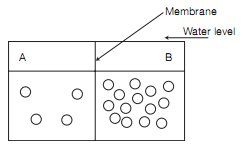The amount of bone in the elderly skeleton—a key determinant in its susceptibility to fractures—is believed to be a function of two major factors. The first is the peak amount of bone mass attained, which is determined by a variety of variables. One of the variables is genetic inheritance. Another is gender, as elderly men experience only half as many hip fractures as elderly women. Race may be another variable: African American women have a lower incidence of osteoporosis fractures than Caucasian women. Still other variables include diet, exposure to sunlight, and physical activity.
The second major factor is the rate of bone loss after peak bone mass has been attained. While many of the variables that affect peak bone mass also affect rates of bone loss, additional factors influencing bone loss include physiological stresses such as pregnancy and lactation. Hormonal status, reflected primarily by estrogen and progesterone levels, exerts the greatest effect on rates of decline in skeletal mass.
Among the following, who is likely to achieve the lowest peak bone mass?
Explanation
The peak bone mass is lower in women than in men, and apparently it is lower in Caucasian women than in African American women. Pregnancy affects bone loss but not peak bone mass.
Visit our website for other GED topics now!





